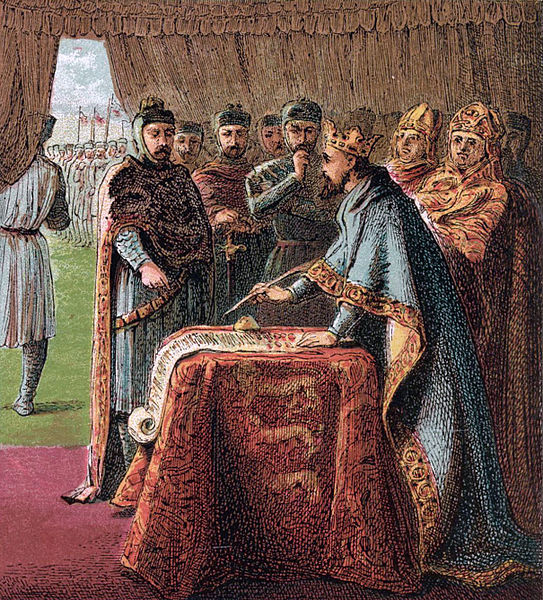
Word of the Day: Wantwit
Today’s word of the day, thanks to Anu Garg and A.Word.A.Day on the Wordsmith.org website, is wantwit. According to Garg, the noun means “A fool; one lacking good sense” and comes from “want + wit, from Old Norse vanta (be lacking) + Old English wit (mind). Earliest documented use: 1449.”
The first half of this compound word is want, which in contemporary English generally means something like a desire, or in the verb form, to desire: “I really want a PlayStation for Christmas; a mere GameCube will not satisfy my want.” But its meaning in early ages was slightly different. According to www.etymonline.com, want first appears “c. 1200, ‘to be lacking,’ from Old Norse vanta ‘to lack, want,’ earlier *wanaton, from Proto-Germanic *wanen, from PIE *weno-, suffixed form of root *eue- ‘to leave, abandon, give out.’ The meaning ‘desire, wish for, feel the need of’ is recorded by 1706.” You can see the old meaning in the old adage “Waste not, want not,” although it is possible to read want in the more modern sense.
The modern sense of wit is something like cleverness. But wit, like want, has undergone some changes throughout the history of English. According to www.etymonline.com, it originally meant “’mental capacity,’ Old English wit, witt, more commonly gewit ‘understanding, intellect, sense; knowledge, consciousness, conscience,’ from Proto-Germanic *wit- (source also of Old Saxon wit, Old Norse vit, Danish vid, Swedish vett, Old Frisian wit, Old High German wizzi ‘knowledge, understanding, intelligence, mind,’ German Witz ‘wit, witticism, joke,’ Gothic unwiti ‘ignorance’), from PIE root *weid- ‘to see,’ metaphorically ‘to know.’ Related to Old English witan ‘to know’ (source of wit (v.)).
“Meaning ‘ability to connect ideas and express them in an amusing way’ is first recorded 1540s; that of ‘person of wit or learning’ is from late 15c.”
On this date in 1215, King John of England made an oath to Pope Innocent III that he would become a crusader. Launching a crusade was a big deal for Pope Innocent III. He began the Fourth Crusade (1202-1204). He also started the Fifth Crusade (1217-1221), which is the one John promised to participate in. And John swore the oath to Innocent III in order, he hoped, to secure the Pope’s support in his ongoing battle with the barons, particularly the norther barons.
John was the fourth and last surviving son of Henry II and Eleanor of Aquitaine. His older brother, Richard, called the Lionhearted, was king of England from 1189 to 1199. He participated in the Third Crusade, and it took him a long time to get home because of interference from his enemies. During Richard’s absence, John served as Prince Regent of England. This was the famous period of Ivanhoe and the Robin Hood stories.
John became the king in 1199, after his brother’s death. His predecessors were both powerful personalities and powerful rulers who believed in diving majesty. They ruled through the power of their wills and of their armies. They dominated their country, from the peasants all the way up through the barons. But John did not have such a personality and was not as able to command the authority to rule the barons.
John had to deal with a variety of uprisings during his reign. The most significant happened in 1215, the year in which John swore to go on a crusade. The barons had some legitimate complaints, and they spoke out against John in a verbal and military way. The northern barons organized an army (they called it the Army of God), and they marched on London and took control of large parts of England. Finally, John met the rebel barons at a place called Runnymede, and through negotiation found peace in the signing of what is today known as the Magna Charta (the “great charter”).
The Magna Charta is one of the founding documents of democracy and liberalism, though its scope is actually quite narrow and limited. And, sadly, the peace that it brought was short lived. First, John appealed to Pope Innocent III to declare the Magna Charta null and void, which the Pope was happy to do because, well, power loves power. But John’s assertion that the charter was no longer valid didn’t sit too well with the barons who had forced it upon him.
By 1216, the war between the barons and King John was on, and King John would lose. The war was essentially a stalemate, but John contracted dysentery, and eventually he died from it. He also lost much wealth and the crown jewels crossing the river as he and his troops crossed a wash. But the precise spot of this disaster has never been determined.
Of course, John could have retained his power and lived and reigned for a much longer time than head. He could have kept the treaty with the barons and perhaps even gone on to fight in the Fifth Crusade, as he promised to do. But John was a true believer in the divine power of the king, and the desire to live out that theory led to his early death. Well, that and the fact that John, whose nickname was “Lackland,” was a wantwit.
Today’s photo is of the painting of King John’s signing of the Magna Charta, painted in 1868 by Joseph Martin Kronheim.